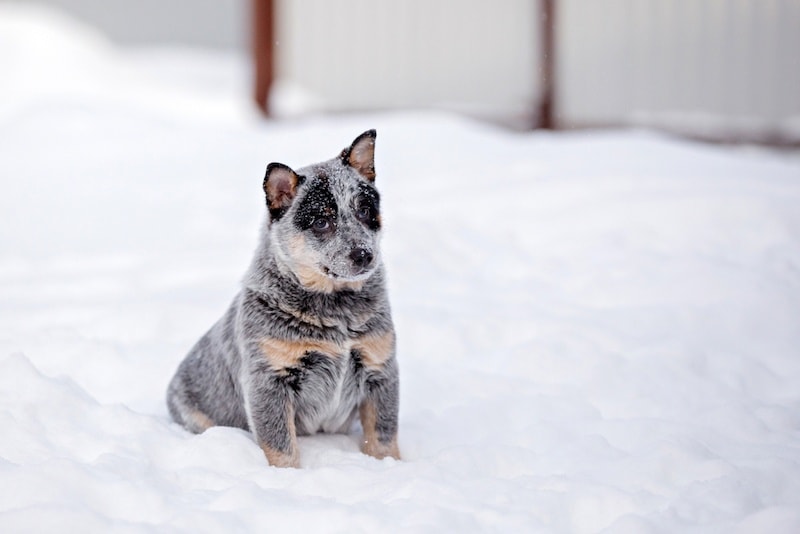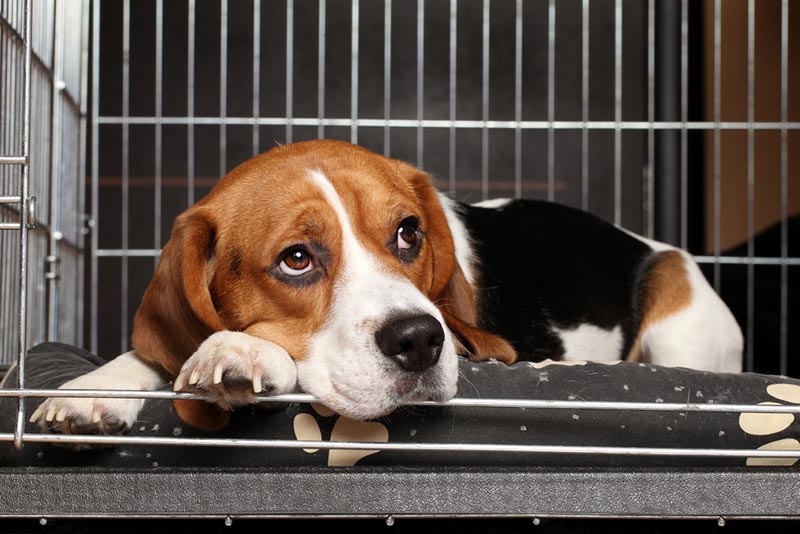Dwarf German Shepherd: Facts, Origin & History (With Pictures)

Updated on

German Shepherds are fantastic companions and loyal service dogs, but what about dwarf German Shepherds? Can the same be said for them, or should you expect a completely different dog? Dwarf German Shepherds look like German Shepherd puppies their whole lives, but how long is their lifespan, and what quality of life should you expect? In this article, we’ll examine those questions and more.
| Height: | 10–20 inches |
| Weight: | 35–50 pounds |
| Lifespan: | 4–5 years |
| Colors: | Tan, black, sable |
| Suitable for: | Active families, owners with patience for training, experienced owners |
| Temperament: | Loving, loyal, aggressive |
Chances are you will struggle to find a dwarf German Shepherd because many are killed as soon as signs of a genetic disorder first appear. However, it doesn’t make them impossible to find. Dwarf German Shepherds are a pure breed that has inherited a recessive gene that causes pituitary dwarfism. The disorder leads to a shorter stature, poorer health, and shorter lifespan.
Dwarf German Shepherd Breed Characteristics
The Earliest Records of Dwarf German Shepherds in History
German Shepherds can be traced back to 1899 Germany. They were initially bred as herding and guard dogs. However, the dog we know and love today can be traced back to Max Emil Friedrich von Stephanitz, who created the first German Shepherd club, “Verein fur deutsche Schaferhunde,” and Horand von Grafrath who owned the very first German Shepherd.
There are no official records of when pituitary dwarfism first appeared in German Shepherds. Because of the shortened lifespan, their tendency to be aggressive, and “undesirable” features, the dwarf German Shepherd has never been developed as a separate breed.
Dwarf German Shepherds are linked with faulty breeding techniques employed by puppy mills or backyard breeders. Since puppy mills and backyard breeders don’t health screen the parents, there’s a risk of puppies inheriting this genetic condition, which is passed from parents that are carriers of a certain gene type.
Signs of a dwarf German Shepherd are evident in the first few months of a dog’s life, and many are believed to be quietly euthanized without any records being kept that they ever existed.

How the Dwarf German Shepherd Gained Popularity
Dwarf German Shepherds are not considered popular, but German Shepherds are one of the most popular breeds in the world. They have built a reputation for being loyal, loving, and hard-working. They form strong bonds with their humans and thrive in family life.
German Shepherds are versatile working dogs, naturally vigilant and protective, with a strong sense of responsibility. They excel as guard dogs and have been used by the military and police as service, search, and rescue dogs. They’re intelligent, with keen problem-solving skills, and are quick to learn.
Most dogs with pituitary dwarfism are euthanized and do not reach their fifth birthdays. Additionally, as dwarfism is an inherited disease in dogs, affected dogs shouldn’t be bred.
Formal Recognition of Dwarf German Shepherds
German Shepherds were recognized by the American Kennel Club (AKC) in 1908. However, it shouldn’t be too surprising that dwarf German Shepherds aren’t recognized.
The stunted growth of the dwarf German Shepherd is one of the most noticeable traits of this dog. However, their problems go much deeper than just their size. Dwarf German Shepherds suffer from severe growth issues, such as the abnormal development of the joints, spine, and bones. As a result, they risk experiencing pain and instability throughout their lives. Some dogs also go on to experience paralysis in their lifetime.

Top 5 Unique Facts About Dwarf German Shepherds
1. They Suffer From Many Health Problems
Dwarf German Shepherds can develop coat and skin problems; their soft puppy coat will shed, but they rarely develop an adult coat, and their skin becomes rough and scaly.
Their adult teeth grow too late or don’t grow at all, and organs, such as their reproductive organs, might not form properly or at all. They can also suffer from secondary hypothyroidism and renal failure.
2. They Can Be Temperamental
Generally, dwarf German Shepherds don’t reach behavioral maturity because they don’t live long enough. The hormonal abnormalities might also result in temperamental and behavioral problems such as aggression and extreme separation anxiety.

3. They Can Be Pricey
While not many owners go out looking to purchase a dwarf German Shepherd, some breeders might unscrupulously sell you one and advertise it as a miniature German Shepherd. For this reason, it’s important to pick a reputable breeder you can trust.
4. They Have to Receive Treatment
Pituitary dwarfism is treated with hormone therapy, and it is necessary if your dog is to live beyond adolescence. Thyroid and growth hormone treatments are also recommended. These treatments can extend their lives, but they aren’t always reliable.
5. They Can Lead Fulfilling, Happy Lives
Despite everything they go through, these dogs are exactly like any other dog; they love their families and are utterly devoted to their owners. While it isn’t recommended you seek out a dwarf German Shepherd since they are not dogs that should be purposefully bred, if you adopt one, it’s possible to provide a happy, safe, comfortable life for them as long as you have done your research!

Does the Dwarf German Shepherd Make a Good Pet?
Dwarf German Shepherds are unique dogs that require a special type of care from their owners. They have many health and behavioral problems that can make their care challenging, and their lives are short and sometimes filled with pain. There are treatments available, but they are still in their infancy. Veterinarian bills can run up, so it’s important to remember that this will be an expensive dog.
Dwarf German Shepherds aren’t impossible to train, but they require more time, knowledge, and patience from an experienced owner. They need a very special person to provide the life they deserve, for however long that life may be.
Final Thoughts
The dwarf German Shepherd is a beautiful dog that looks like a puppy for their entire life. Behind this adorable exterior lie years of treatment and pain. They can be challenging to own, but dogs with dwarfism can lead full lives as long as their families know exactly what to expect.
It’s important to know all the potential health concerns and how they might affect your dog. As the dwarf German Shepherd is generally unwanted, it’s incredibly important that the right families give them the best life possible.
See Also:
Featured Image Credit: Happy monkey, Shutterstock












